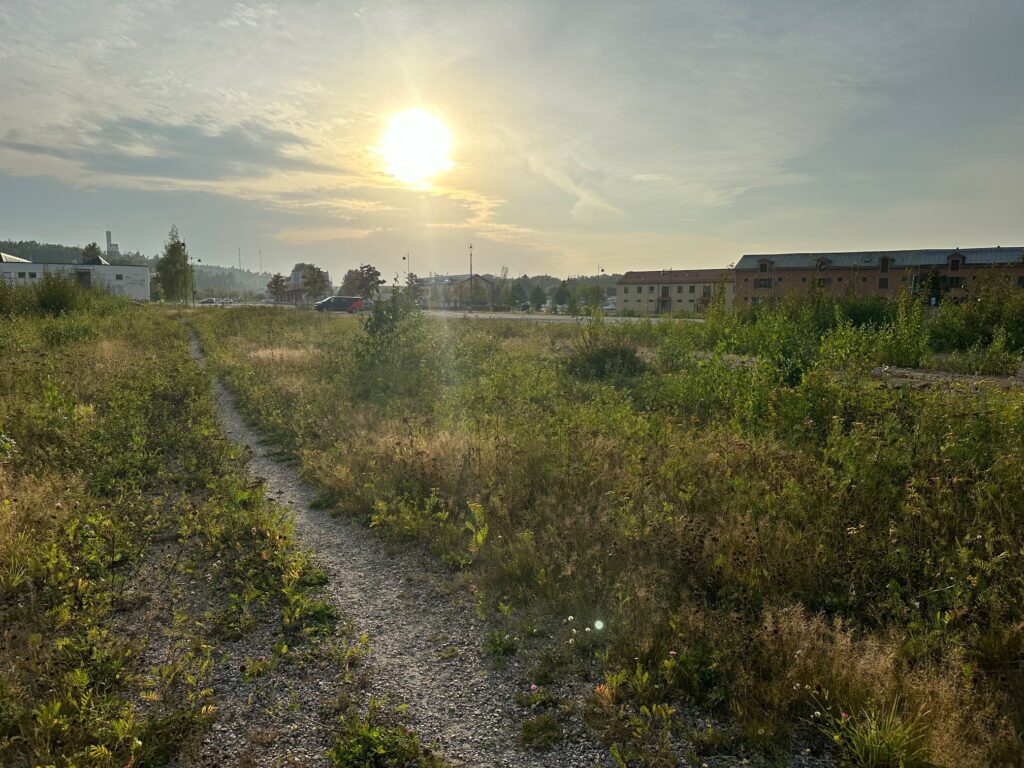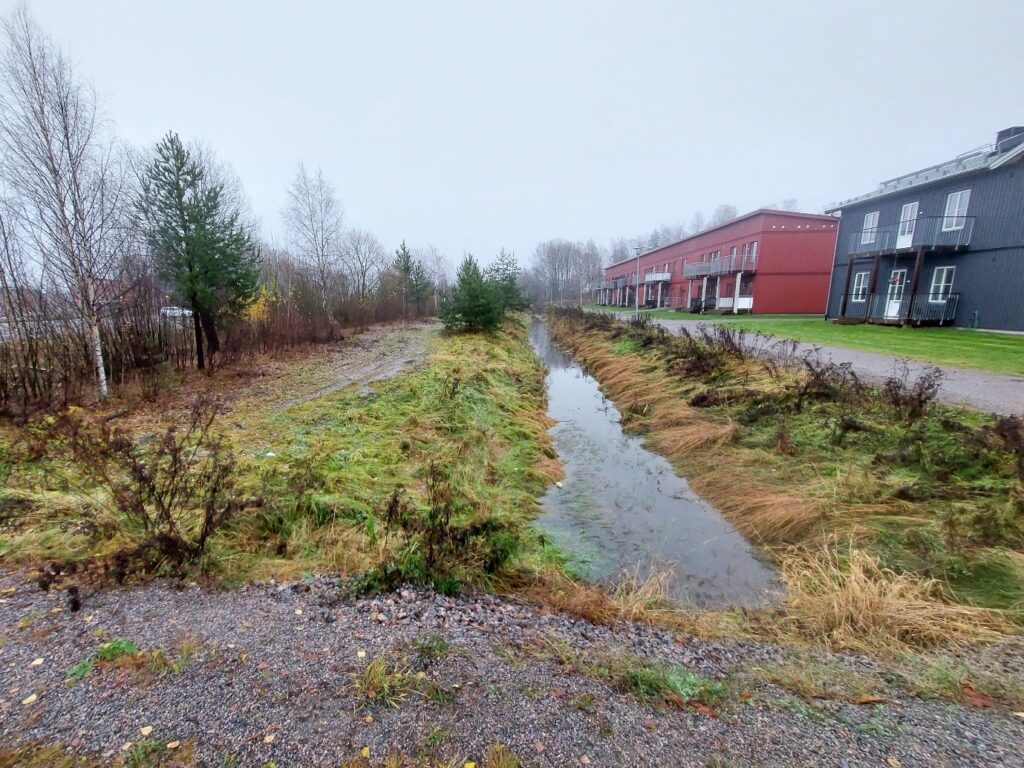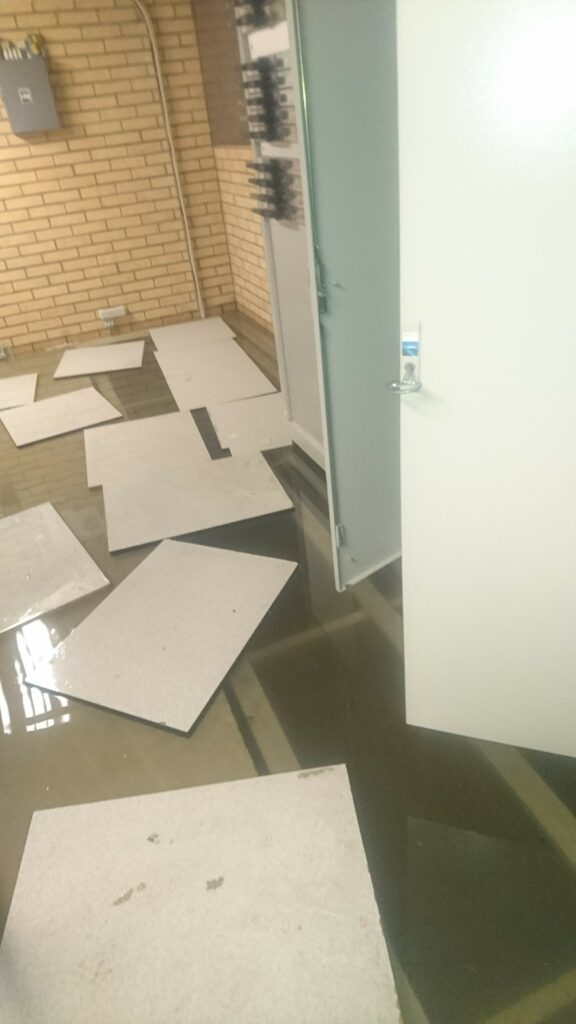Pilot Site in Spotlight: Rebuilding Urban Ditches for Stormwater Purification in Söderhamn
What is in common with floods in basements and toxins released from pavement runoffs close to a cultural heritage listed railway? Both are problems that are to be solved by improved stormwater management in the municipality of Söderhamn in Sweden.

Stormwater has been causing nuisance in the Broberg district of the municipality of Söderhamn, Sweden. During heavy rainfalls, there has been flooding in basements of the district’s residential buildings. Also, harmful substances are released from pavement runoffs close to an old heritage railway. The old pipe system for stormwater management in the area is not fully functioning and does not meet the contemporary objectives.
– Broberg area is close to Söderhamn’s bay and is highly affected by the sea-level rise, says Project Manager, environmental pedagogue Linda Hillberg from the Municipality of Söderhamn.
A great opportunity for solving stormwater-related problems was found in the cross-border co-operation of the MUSTBE project. Together with other project partners’ experience on the subject, the municipality of Söderhamn has been able to develop its stormwater management solutions. The MUSTBE project develops nature-based solutions (later in the text: NBS) for stormwater management and treatment in aspiration for a greener and cleaner future of the Baltic Sea. In addition to Broberg’s pilot site, Söderhamn municipality has also another MUSTBE pilot site in a district called Söderhamnsporten.

Green Pairs Well with Grey
The NBS for Broberg is based on rebuilding urban ditches. It combines so called grey and green solutions. Grey refers to “grey infrastructure”, meaning more long-established water security planning with a network of water detention and purification infrastructure, such as pipelines, ditches and detention ponds. Greenness instead refers to integrating natural infrastructure, such as forests, wetlands and rivers, leading to sustainable and cost-effective solutions.
One of the positive aspects of Broberg’s NBS is that stormwater is treated and utilised at the source. The benefits include prevention of pollutants from reaching the community and less space requirement than some other stormwater solutions. The multi-objective NBS at Broberg will also reduce the inflows of nutrients, hazardous substances, plastics, and toxins into the Baltic Sea. The MUSTBE project’s green solutions for Söderhamn’s two pilot sites are in line with Swedish national water management plans and marine strategies.

Careful Planning
There is already a stormwater outlet pipeline into Söderhamn’s bay in Broberg, but according to Hillberg, its condition is poor and it is partially located under buildings. Failure of the pipelines has a significant impact on the whole area, for example increasing the risk of pluvial flooding.
– The stormwater runoff systems to be developed have to be profoundly analysed beforehand, in order to avoid the acceleration of the flooding risk. Any failure of the system will also impact negatively the Baltic Sea, Hillberg points out.
Also, the existing stormwater facilities are not designed for water purification. Traditional pipeline systems have often been designed to convey water as quickly as possible to the outlet, but in the MUSTBE project this is not enough. Therefore, Söderhamn is envisaging the areas as key examples of integrated multi-objective modern stormwater systems.
Rebuilding of urban ditches – the solution chosen in Broberg – is a common way of addressing the rising need for stormwater management. The focus is on managing the large volumes of stormwater, ensuring proper treatment. Also, a brand new stormwater outfall will be constructed to Söderhamn’s bay. Secondary runoff paths are designed to alleviate the impact of floods and low-lying areas are designed, suitable for temporary flood detention basins.
The Broberg district, alongside Söderham’s other pilot site area Söderhamnsporten, are considered crucial for the development of the municipality. Consequently, improvements in the districts are very likely to retain their value.
Project facts
- The MUSTBE project is led by Estonian municipality Viimsi.
- In addition to Viimsi, other project partners are City of Pori (Finland), City of Tallinn (Estonia), municipality of Söderhamn (Sweden), City of Riga (Latvia), Tallinn University of Technology (Estonia), Satakunta University of Applied Sciences (Finland), and Riga Technical University (Latvia).
- The project has seven pilot sites in total: alongside with Söderhamn’s two pilot sites, there is one in Tallinn (Estonia, one in Viimsi (Estonia), one in Riga (Latvia), and two in Pori (Finland).
- MUSTBE (Multidimensional stormwater treatment in urban areas for cleaner Baltic Sea) is co-funded by the Interreg Central Baltic programme for 1.5.2023-30.4.2026.
- The project budget is 3 980 476 €.
Writers and editors: Krista Valkonen, Hanna Kajander and Meri-Maaria Salo

